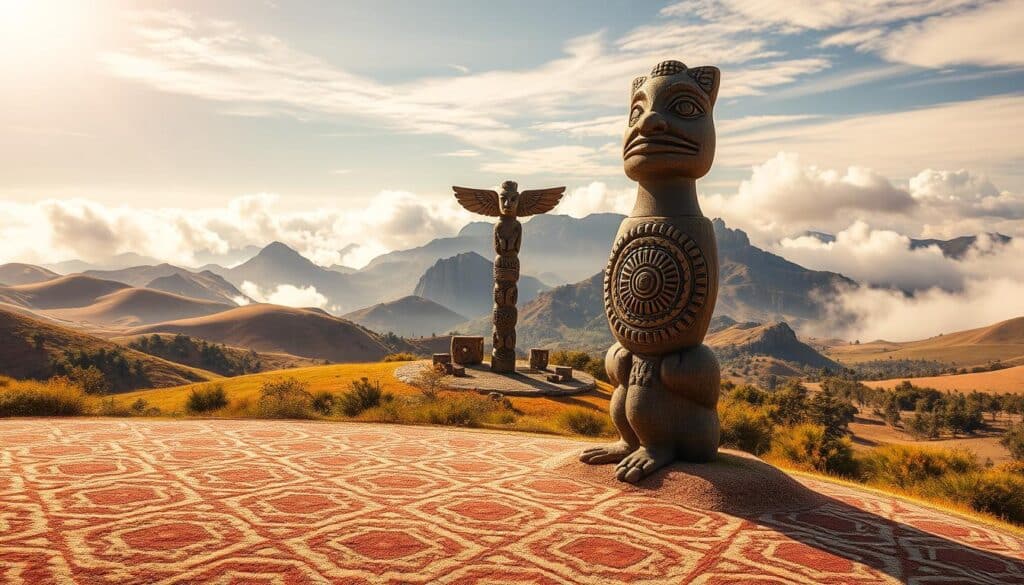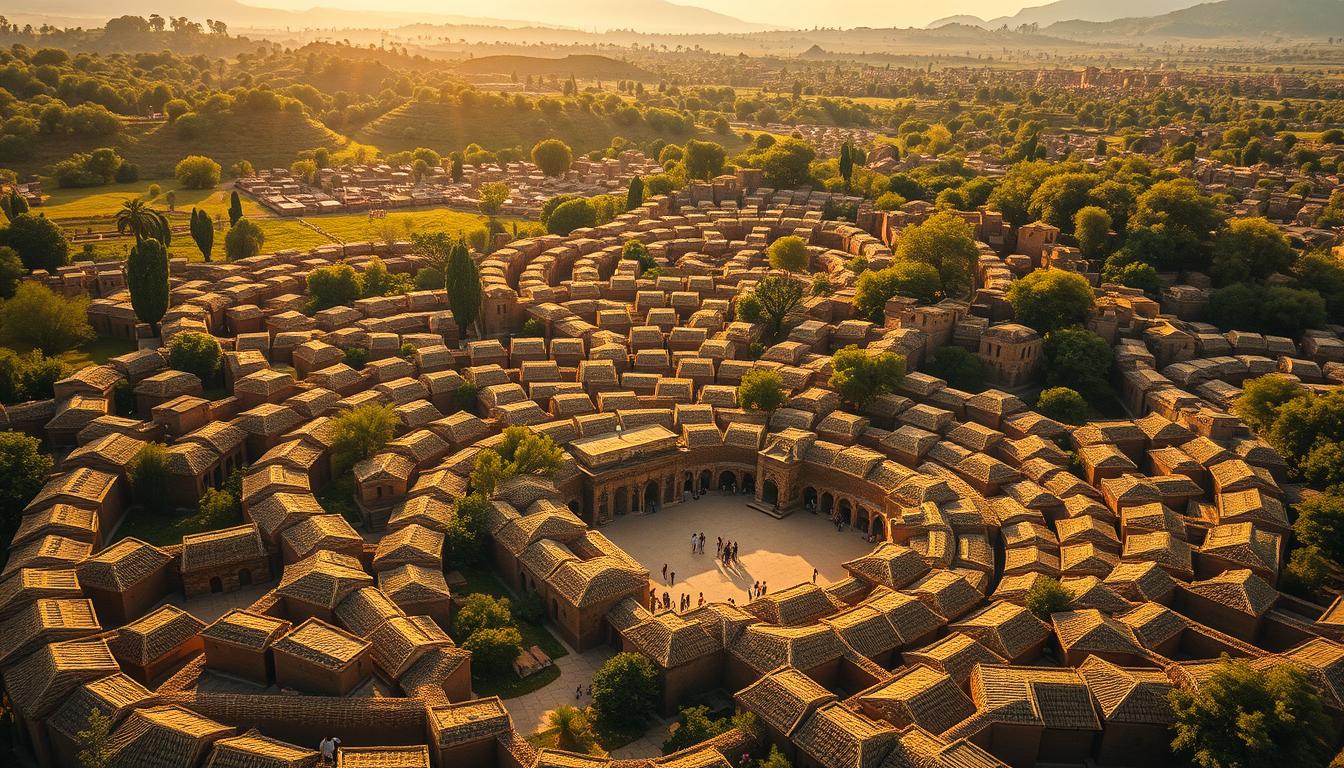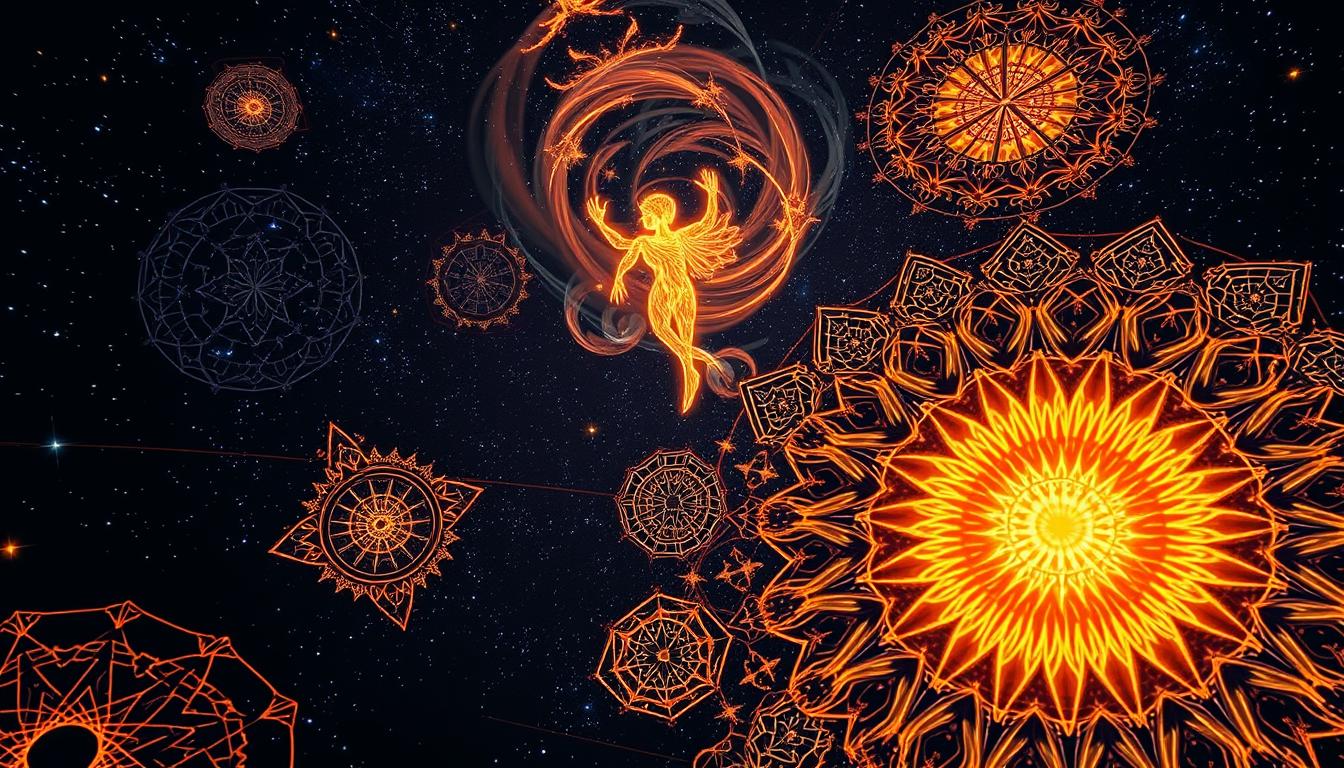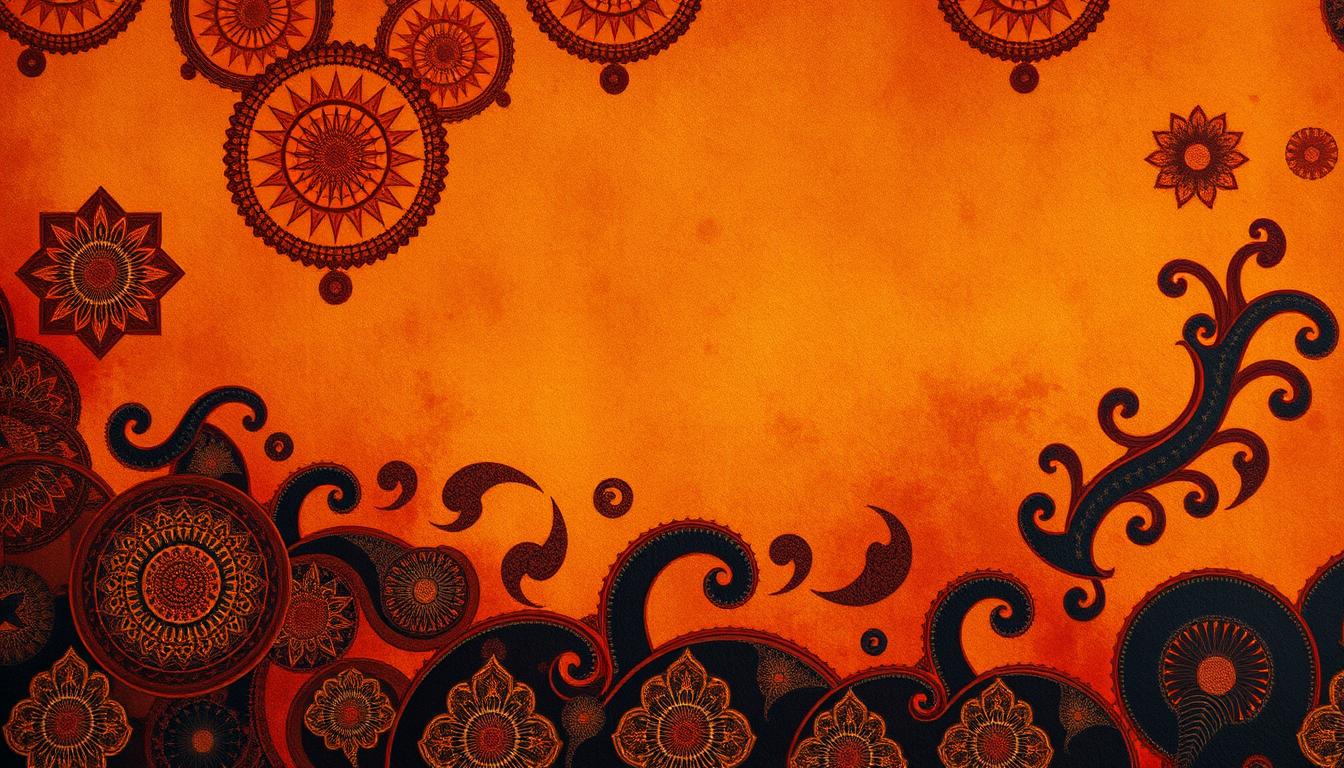Indigenous Fractal Knowledge mixes traditional wisdom with modern math, showing the depth of native knowledge systems. It shows how fractals are not just math ideas but also meaningful cultural symbols in many communities. Understanding the cultural meaning of fractals helps us value their math contributions and suggests ways to include this knowledge in education. Exploring this further puts indigenous knowledge right at the heart of today’s math conversations.
Introduction to Indigenous Fractal Knowledge
Indigenous fractal knowledge is a deep blend of math and culture. It shows how cultural stories and mathematical ideas are linked. Through this introduction, we explore what this knowledge is. We look at its importance in the mix of cultural math. Different indigenous groups have made their own math systems. These appear in art, building designs, and daily life.
This knowledge plays a big role in forming a community’s sense of self. By understanding its value, we see math in a new light. It’s not just about numbers and formulas. Math is also a way to share cultural beliefs and views. This view makes us think about math in a more open way. It highlights the important ideas and stories of people often ignored.

The Cultural Significance of Indigenous Fractals
Indigenous fractals aren’t just math. They’re key in showing who people are and where they come from. You can see these complex patterns in stories, art, and buildings. They mix math with tradition smoothly.
In Africa, fractals in art show a strong math knowledge woven into culture. These designs share stories and spiritual messages. They celebrate who people are, keeping their culture alive.
By using indigenous fractals, communities keep their special math knowledge alive. They help others understand the impact on cultural identity. These fractals keep talking across generations. They make people value math in traditions more.
Understanding the Mathematical Intricacies of Indigenous Fractal Knowledge
Exploring indigenous fractals reveals a unique mix of art, culture, and math. These patterns are part of many community aspects. They appear in buildings and farm layouts, showing a close bond with nature.
The Role of Fractals in Indigenous Practices
Fractals play a key role in indigenous practices, both as useful and symbolic. For example, traditional homes often use fractal geometry. This harmonizes with nature, keeping cultural identity alive. In farming, fractal patterns help in making the most out of the land, showing a grasp of math in their methods.
Patterns in Nature and Mathematics
Nature’s patterns inspire indigenous math systems. Looking at how trees branch or leaves arrange leads to complex shapes. These are then shown in art, expressing a deep respect for life’s connections. Recognizing these patterns shows how indigenous groups skillfully blend with nature.
Historical Context of Indigenous Mathematics
Indigenous mathematics comes from a deep history of knowledge from many Indigenous groups. These systems were linked to their cultures and the world around them, providing unique math insights. When colonial education came, it pushed aside these indigenous ways, making them less valued.
Influence of Colonial Education on Indigenous Knowledge
Colonial education pushed a European view of math, ignoring the value of indigenous knowledge. This caused a loss of traditional math practices. Indigenous students learned to see their cultures as lesser, cutting ties with their math roots. The focus was on Western math, ignoring the vast field of indigenous math.
Revitalizing Indigenous Mathematical Practices
There’s a new push to bring back indigenous math practices. This is part of bigger efforts to respect indigenous ways. Educational programs are blending traditional knowledge with new teaching ways. This helps make a curriculum that respects indigenous math contributions. Efforts like workshops, community engagement, and updating curriculums aim to combine old and new math ways.
Fractals in Indigenous Architecture and Design
Indigenous architecture shows the deep beauty of fractals, linking designs to culture. The use of fractal geometry in building makes structures that are useful and meaningful. These buildings share stories through their shapes and angles.
In many African communities, architecture blends math and culture seamlessly. Repeating patterns, key to fractals, make the buildings look good and strong. Using natural materials lets the environment shape design, tying buildings closely to cultural roots.
- Buildings often mimic natural forms, embodying fractal elements that reflect ecological relationships.
- Patterns are derived from local sacred symbols, merging geometry and spirituality.
- Community engagement in design processes ensures that cultural patterns are preserved and celebrated.
Exploring these designs reveals the deep math knowledge of indigenous peoples. The blend of fractals and culture in these buildings showcases their advanced math understanding.
Case Studies of Indigenous Mathematical Concepts
Indigenous mathematics show us rich traditions tied closely with culture. This section looks at African cultures to highlight their complex counting systems and unique geometric patterns. By looking at these examples, we see the deep knowledge in indigenous practices, challenging views that often undervalue non-Western math.
Examples from African Cultures
Many African traditions have their own math concepts. The Akan people in Ghana use a counting system based on relationships. Their way of counting reflects community life, showing a complex understanding of math.
Indigenous Counting Systems and Geometric Patterns
Indigenous counting systems can be quite complex. For the Zulu, their counting involves grouping that has cultural meaning.
Geometric patterns also play a big role in their crafts and art. These patterns do more than look good; they mix math with cultural expression.
The Intersection of Ethnomathematics and Fractal Geometry
The link between ethnomathematics and fractal geometry shows how culture impacts our understanding of math. Ethnomathematics looks at how different cultures use and think about mathematical ideas. It helps us see how traditional knowledge shapes math in unique ways.
Fractal geometry is a key idea in this mix. It lets us study complex patterns in nature, like those in indigenous art, mathematically. Fractal geometry and cultural math together show how nature and math are connected. This helps us value different cultures’ math contributions.
Looking at these links makes math discussions richer. It points out the need for a broader approach in today’s education. As teachers and researchers bring in these cultural methods, the value of adding traditional knowledge to standard math becomes clear.
Integrating Indigenous Knowledge into Modern Education
Adding indigenous knowledge to modern education enriches learning and helps students understand more deeply. It connects them to their cultural roots and gives new views on math.
There are many ways to blend these teachings into lessons:
- Culturally responsive pedagogy: Teachers adjust their methods to include indigenous views, making math more relevant to students’ cultures.
- Project-based learning: Students work on projects that use indigenous math, linking school to their own lives.
- Collaborative learning environments: Working together, students create a place where everyone’s knowledge, including indigenous, is valued and shared.
This blend of old and new ways of learning lets students see how their culture and education meet. As teaching methods grow, using indigenous knowledge is key to a wider and more fitting curriculum.
Challenges in Incorporating Indigenous Fractal Knowledge
Bringing Indigenous Fractal Knowledge into schools has its set of challenges. One big issue is the pushback when trying to update old lesson plans to include this knowledge. Teachers often face problems like not having enough materials or proper training. This makes it tough for them to teach these ideas well.
Success depends a lot on considering cultural differences when creating lesson plans.
Cultural Sensitivity in Curriculum Development
To include Indigenous Fractal Knowledge properly, we need to focus on being culturally sensitive. Working together with native communities is key. It helps make sure lessons are genuine and relevant. This team effort can make learning more exciting. It connects students to the rich cultures behind the lessons.
When teachers learn from indigenous viewpoints, it helps students gain a deeper respect and understanding.
- Understanding the unique cultural backgrounds of indigenous populations
- Creating training programs focused on the importance of cultural sensitivity
- Developing resources that reflect indigenous perspectives
- Facilitating open dialogues with indigenous leaders and educators
Emphasizing these points improves lesson planning. It also helps overcome the educational barriers of the past. As more schools see the value in indigenous knowledge, our education system grows richer.
Conclusion
Exploring indigenous fractal knowledge has shown us how important it is. It’s not just about culture, but also math. We’ve learned how important it is to include this knowledge in math conversations.
Bringing this knowledge into our classrooms can make a big difference. It helps schools understand and value diverse math ideas. This way, we can change education to respect all kinds of knowledge.
The journey to value indigenous knowledge isn’t over. It helps us see math in new ways. This makes our learning richer. It prepares us to teach future generations about the value of indigenous math.



